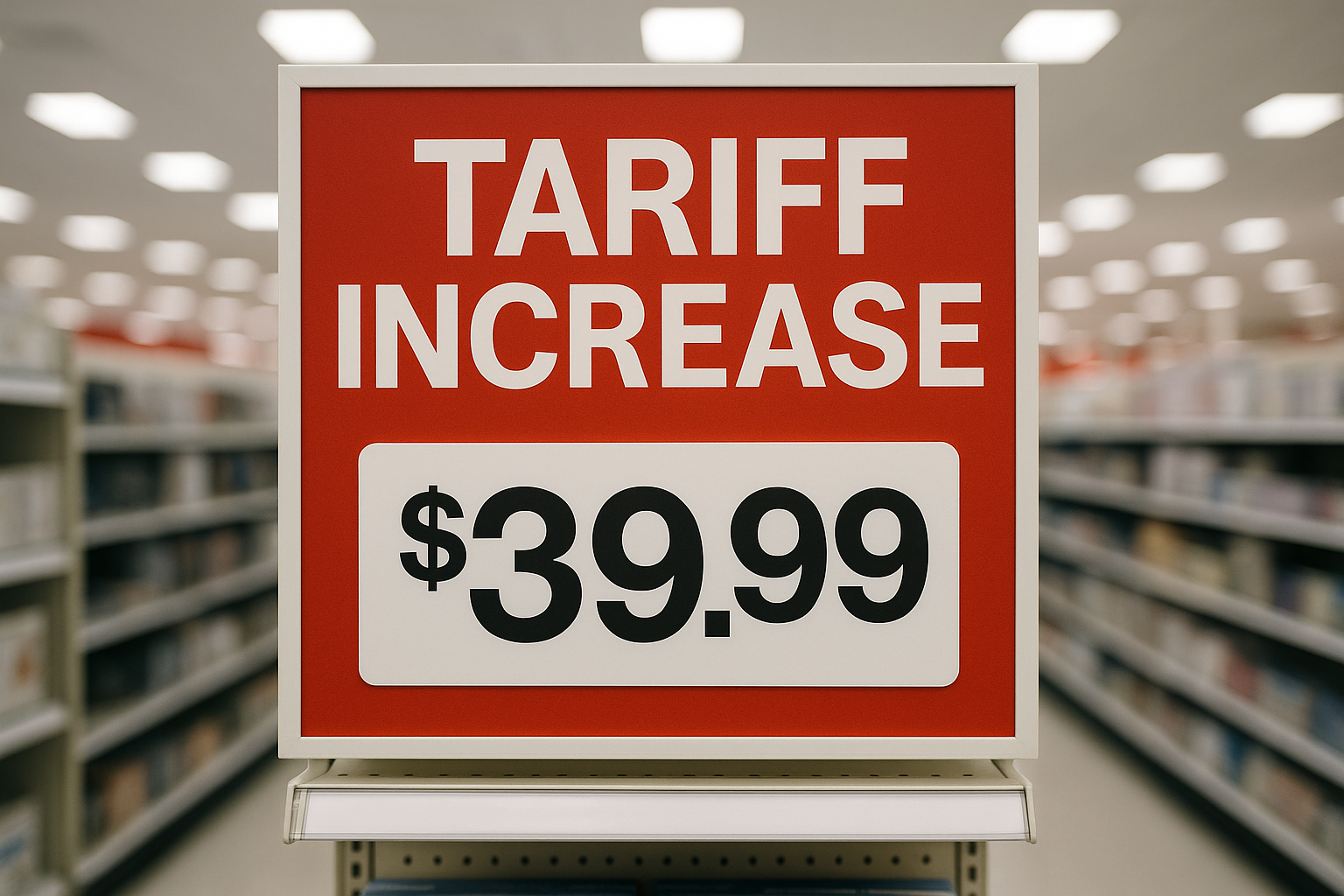Price Shocks in Your Supply Chain: How Electronics Retailers Can Tackle Tariff Volatility with AI
Price Shocks in Your Supply Chain: How Electronics Retailers Can Tackle Tariff Volatility with AI
Tariffs on key electronic components like chips, displays, and batteries are increasingly unpredictable. Retailers who rely on reactive pricing face margin erosion, customer frustration, and lost competitive ground. Predictive pricing powered by AI gives brands a chance to stay ahead, not just react.
To understand how AI can help retailers adapt, we first need to unpack where tariffs are hitting hardest and why the electronics category feels the pressure more acutely than most.
A Rapidly Changing Tariff Environment
Electronics retailers must navigate a complex patchwork of tariffs:
- Tariffs on imported electronics often range from 10% to 40%, depending on classification and country of origin.
- Under the “Liberation Day” tariff rules, a 10% baseline tariff went into effect on April 5, 2025, with higher reciprocal tariffs starting April 9. Smartphones and computers were temporarily excluded.
- Some forecasts suggest U.S. consumers could see electronics prices rise between 26% and 68%, combining general tariffs with targeted levies on Chinese imports.
- A 100% tariff on semiconductors was introduced in August 2025, with exemptions for firms investing in U.S. production, as reported by the Economic Times.
- Tariffs on GPUs, SSDs, and motherboards remain exempt until November 2025, helping soften immediate disruption to specific SKUs.
This volatile policy environment means retailers can no longer rely on generic pricing rules or “wait and see” approaches.
As tariffs shift unpredictably, electronics retailers are left trying to adjust on the fly. But navigating these changes effectively requires more than awareness it demands smarter, faster decision-making.
Why Retailers Struggle with Tariff Responses

Tariff volatility breaks legacy pricing models.
- Sudden cost spikes strain already-thin margins.
- Delayed reactions allow competitors to gain advantage.
- Blanket price hikes alienate customers or overshoot market expectations.
In electronics, where cost of goods sold often exceeds 60%, the effects are severe. Retailers either lose share by reacting too late or lose margin by reacting too broadly.
Traditional pricing responses can’t keep up with today’s speed of disruption. That’s where AI-powered platforms like Hypersonix come in offering tools that go beyond reaction to deliver foresight.
How Hypersonix Predictive Pricing Helps
Hypersonix AI enables electronics retailers to handle cost shocks with clarity and speed. Here’s how:
-
What-if simulations
Retailers can simulate 10%, 25%, 50%, or 100% cost increases at the category or SKU level to project profit impact.
-
Category-level elasticity modeling
AI analyzes past sales, demand shifts, and regional behavior to predict how customers will respond to different pricing scenarios.
-
Competitor price tracking
Monitor how substitute SKUs and competitors are reacting, and identify when a price increase is viable or risky.
-
Smart segmentation
Apply different strategies by region, product line, or consumer cohort. Not all customers or stores react the same way.
The result is precision pricing, not panic pricing.
These capabilities aren’t just theoretical they’re already helping electronics retailers respond with precision instead of panic when tariffs strike.
Real-World Application: Predicting Impact Before It Hits
One leading electronics retailer used Hypersonix to prepare for the anticipated 100% tariff on semiconductors. Here’s how they responded:
-
Ran simulations across 30 high-margin SKUs
-
Identified which product lines (like gaming laptops) could sustain 10–15% increases without impacting demand
-
Found that entry-level SKUs required bundling or staggered increases to maintain volume
-
Spotted that no competitors had yet adjusted prices in key regions, creating a lead window
By acting early and with precision, they protected margin and avoided customer churn.
The key takeaway? Retailers that plan strategically can take action surgically. And that means avoiding the most common and damaging mistake.

Why Blanket Price Hikes Are a Mistake
Flat markups in response to cost shocks can backfire:
-
Price-sensitive categories like accessories or lower-tier electronics may see volume drop
-
Customers lose trust in pricing consistency across channels
-
You risk matching or exceeding competitor prices even when it’s not necessary
AI helps identify which SKUs to adjust, when, and by how much while retaining control over margin and perception.
But adjusting your own prices is only part of the equation. In a highly competitive electronics market, understanding what your rivals are doing is just as critical.
Competitive Pricing in a Tariff World
Even with rising input costs, customers still compare. Hypersonix Competitor AI allows you to:
- Track online and offline competitor pricing daily or weekly
- Monitor private labels and alternate bundles
- Detect promotional shifts regionally and respond in time
In a tariff-driven market, knowing what the competition is doing is just as important as knowing your own costs.
These challenges are particularly acute in electronics retail, where tariff exposure, price sensitivity, and product complexity converge.
Industry Spotlight: Electronics Retail
Electronics retailers face unique tariff exposure:
-
Semiconductor-intensive products
-
High ASP (Average Selling Price) SKUs
-
Complex supply chains
-
Price-savvy consumers
This creates the perfect storm for margin loss unless pricing is handled surgically and dynamically.
Facing this mix of pressure points, it’s clear that electronics retailers need more than reactive tactics they need predictive strategy built for daily execution.
Conclusion: Predictive Pricing Is a Tariff Strategy, Not Just a Pricing Tool
Tariffs will continue to shape the electronics supply chain. But they don’t have to dictate your margins. With Hypersonix, retailers can:
-
Model tariff impacts before they hit
-
Adjust pricing by product, region, and competitive context
-
Make informed decisions in hours, not weeks
In a volatile trade environment, pricing is no longer an end-of-quarter task. It’s a daily strategy.





